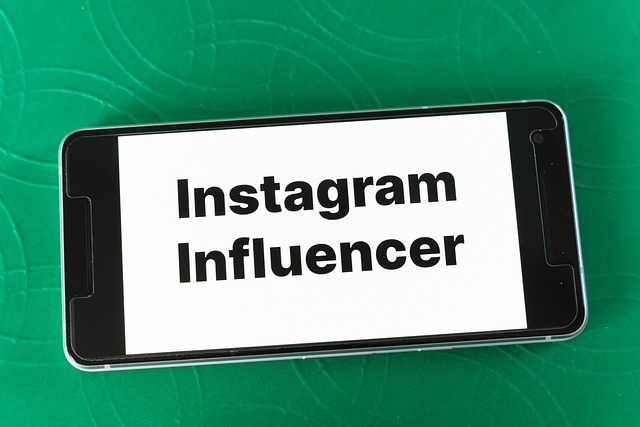In the crowded arena of social media, the difference between a fleeting trend and a lasting movement often boils down to how precisely an influencer can reach the right eyes at the right time. This precision is the science of crafting a targetable audience—a curated group of followers whose interests, behaviors, and values align with the influencer’s content and the brand’s objectives. When executed well, this alignment turns casual scrollers into loyal advocates, turning engagement into tangible business results.
Why a Targetable Audience Is the Cornerstone of Influence
Influencers historically relied on sheer follower counts to prove their worth. In today’s data‑driven landscape, however, quantity no longer guarantees quality. A large, untapped pool of users who have no interest in the niche can dilute messaging, inflate vanity metrics, and erode credibility. A well‑defined targetable audience, by contrast, offers:
- Higher engagement rates, because content resonates more deeply.
- Reduced marketing costs, as paid campaigns are focused on the most receptive segments.
- Improved authenticity, since interactions feel more personal and less transactional.
- Better conversion metrics, turning likes into clicks, clicks into sales, and sales into repeat customers.
Building a Targetable Audience From the Ground Up
Crafting a targetable audience begins with understanding both the influencer’s voice and the market’s pulse. The process can be broken down into four intertwined steps:
- Persona Development: Identify key characteristics—demographics, psychographics, and purchase intent—of the ideal follower.
- Data Collection: Use platform analytics, surveys, and third‑party tools to gather insights on existing followers and potential segments.
- Segmentation: Group users based on shared attributes, creating micro‑audiences for personalized messaging.
- Validation: Run small test campaigns to confirm that each segment responds positively to tailored content.
Persona Development in Practice
Imagine a sustainable fashion influencer aiming to collaborate with an eco‑friendly apparel brand. Their core persona might be: 25‑34 years old, female, lives in urban centers, values authenticity, and follows sustainable lifestyle pages. By aligning content—such as behind‑the‑scenes videos of eco‑material sourcing—with this persona, the influencer naturally attracts and retains the most engaged followers.
“The more you know about your audience’s fears, dreams, and habits, the less you have to guess. A precise persona turns data into storytelling.” – Marketing Lead, GreenThreads
Tools and Metrics That Empower Targeting
While the human touch remains essential, technology equips influencers with granular insights. Key tools include:
- Platform Insights: Native analytics dashboards (Instagram Insights, TikTok Analytics, YouTube Studio) provide follower age, gender, location, and active times.
- Social Listening Platforms: Brandwatch, Sprout Social, and Mention help track conversation trends and sentiment around relevant hashtags.
- Audience Matching Services: Tools like Audience Insights on Facebook or Twitter’s Audience Insights allow influencers to overlay brand data with their follower base.
- CRM Integration: When influencers collaborate with brands, integrating CRM data can track follower conversions and lifetime value.
Metrics that signal a healthy targetable audience include:
- Engagement rate above 2‑3% for platforms like Instagram.
- Follower growth rate stabilized after initial spikes.
- High click‑through rates (CTR) on branded links.
- Positive sentiment scores in brand mentions.
Content Strategies Tailored to the Targetable Audience
Content is the bridge between an influencer’s voice and the audience’s expectations. The following tactics sharpen relevance:
- Storytelling with Data: Use anecdotes that echo the audience’s challenges, supported by statistics that add authority.
- Interactive Formats: Polls, Q&A sessions, and live streams encourage participation from the exact segments identified during segmentation.
- Micro‑Influence Collaborations: Partner with niche micro‑influencers whose followers overlap with your targetable audience for cross‑promotion.
- Seasonal and Trending Hooks: Align posts with current events or seasonal interests that resonate with the persona’s lifestyle.
Engagement Tactics That Convert
Engagement goes beyond likes; it’s about building a community that actively interacts:
- Respond to comments within 24 hours, showing that the influencer listens.
- Use captions that ask open‑ended questions, prompting followers to share their own experiences.
- Host giveaways with entry requirements that involve tagging friends who fit the targetable audience profile.
- Deploy exclusive discount codes or early access offers to the most engaged segments.
Measuring Impact: From Likes to Business Outcomes
Influencers often receive metrics that are easy to flaunt, but brands and audiences demand proof of return on investment (ROI). A robust measurement framework involves:
- Tracking Conversion Paths—from a post click to a brand purchase or sign‑up.
- Calculating Cost per Acquisition (CPA) by dividing the influencer fee and ad spend by the number of conversions.
- Assessing Lifetime Value (LTV) of new customers introduced through influencer campaigns.
- Comparing Engagement Growth Rates before and after targeted content series to gauge audience retention.
Common Challenges in Targeting and How to Overcome Them
Even seasoned influencers face obstacles when fine‑tuning their targetable audience. Here are typical pain points and actionable solutions:
- Audience Fatigue – Rotate content themes regularly to keep the core persona engaged.
- Data Privacy Restrictions – Use anonymized insights and comply with GDPR/CCPA guidelines when handling follower data.
- Platform Algorithm Changes – Diversify posting times and formats to adapt to evolving visibility rules.
- Misaligned Brand Partnerships – Conduct thorough brand audits to ensure values align with the influencer’s audience.
The Future of Targetable Audiences in Social Media
Emerging technologies promise even sharper targeting capabilities:
- AI‑driven audience profiling that predicts emerging interests before they trend.
- Decentralized identity platforms giving users more control over how their data is shared with influencers.
- Cross‑platform meta‑audience creation that unifies user data across Instagram, TikTok, YouTube, and beyond.
- Immersive formats such as AR filters and VR experiences that allow real‑time audience segmentation.
Influencers who adopt these tools early will maintain a competitive edge, delivering hyper‑personalized experiences that feel less like marketing and more like genuine connection.
Conclusion: Mastering the Targetable Audience as a Strategic Imperative
The ability to identify, engage, and convert a targetable audience is no longer a nice-to-have; it’s a strategic necessity in an era where content overload defines the social media landscape. By weaving together persona development, data analytics, content innovation, and rigorous measurement, influencers can transform casual viewers into advocates and amplify brand impact with precision. The future will reward those who treat their audience not just as numbers, but as well‑understood communities whose trust and enthusiasm are the true currencies of influence.




